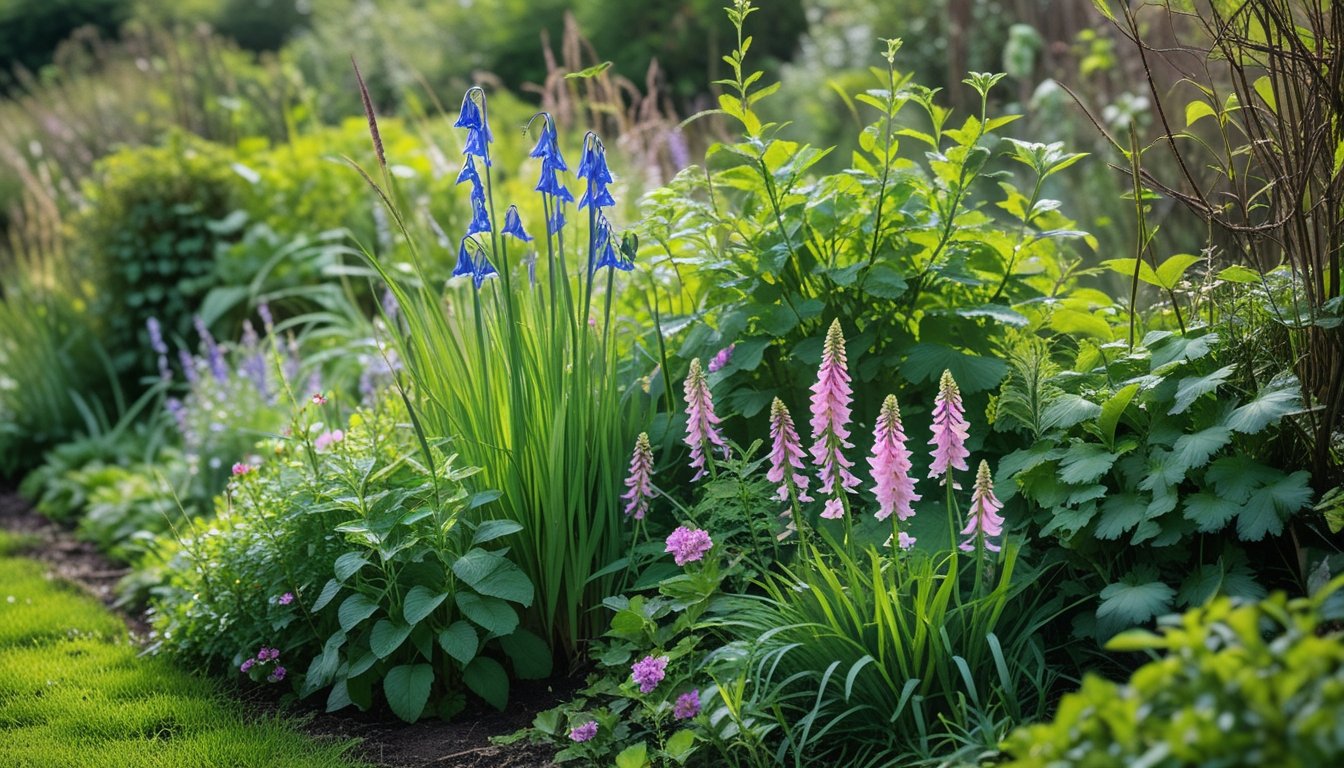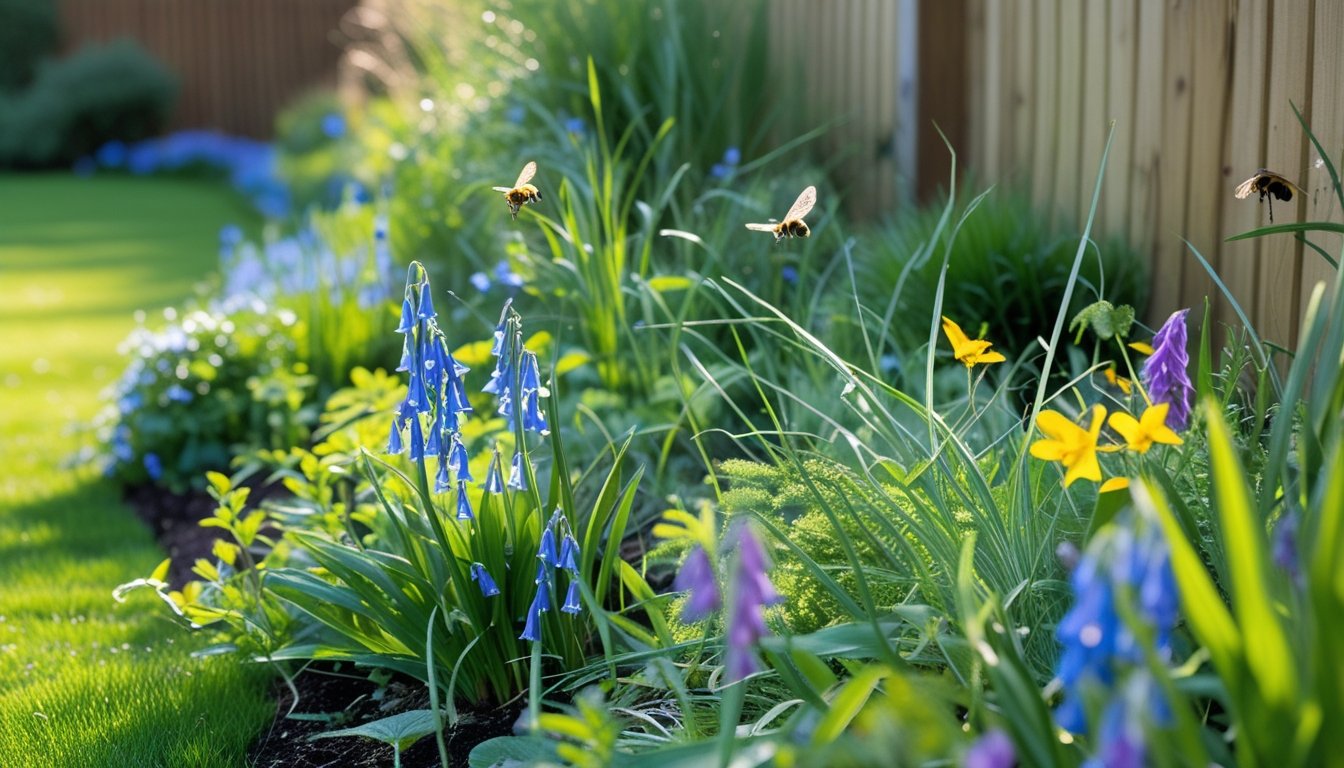Late updated: 17 Nov 2025 10:11
Written by: Emily Thornton
Native UK Plants For Biodiverse Garden Edges: Enhancing Habitat Diversity
The edges of our gardens often present an opportunity to enhance biodiversity and support local wildlife by introducing native UK plants. These plants not only flourish in local soil and climate conditions but also provide vital habitats and food sources for birds, insects, and other wildlife. Native plants are essential for creating a biodiverse garden that thrives and supports intrinsic ecosystem services right at the borders of our outdoor spaces.

Incorporating native plants into the periphery of our gardens does more than beautify the space. They help establish a self-sustaining environment that mitigates stress, reduces maintenance, and supports a myriad of species, from microbes to mammals. The right selection creates a harmonious blend, allowing us to enjoy a lively, eco-friendly garden space with minimal intervention.
It is crucial to manage these garden edges effectively to ensure their ongoing role in promoting wildlife. Understanding which plants to choose can make a significant difference. By selecting well-suited native varieties, we can design garden edges that are not only visually appealing but also play a critical role in conserving local biodiversity.
Key Takeaways
- Native UK plants are pivotal in fostering garden biodiversity.
- Choosing the right plants supports wildlife and ecosystem services.
- Effective management leads to sustainable, lively garden edges.
Best Native UK Plants For Biodiverse Garden Edges

Incorporating native UK plants into our garden edges encourages biodiversity and supports local wildlife. This creates a balanced ecosystem where pollinators thrive, hedgerows provide structure, and trees and ground plants ensure habitat diversity.
Wildflowers For Pollinator-Rich Borders
Native wildflowers such as foxglove (Digitalis purpurea) and bluebell (Hyacinthoides non-scripta) are instrumental in attracting and supporting pollinators. Primroses (Primula vulgaris) and cowslips (Primula veris) also add vibrant colour to our borders while providing nectar for bees and butterflies. Red campion and common knapweed (Centaurea nigra) thrive in sunny spots, creating natural splashes of colour across our garden edges. Diverse wildflower plantings increase the number of pollinators, which in turn enhances plant growth and reproduction.
Native Shrubs And Hedgerows For Structure
Dog rose (Rosa canina) and hawthorn (Crataegus monogyna) are popular choices for hedgerows due to their dense growth and wildlife benefits. Blackthorn and hazel also serve as excellent structural plants. These shrubs provide crucial nesting spots and food sources for birds and small mammals. Hawthorn blossoms attract pollinators, and its berries offer winter sustenance to birds. These mixed hedgerows offer visual interest and a dynamic backdrop for our garden throughout the year.
Native Trees Suitable For Garden Boundaries
Select native trees such as silver birch (Betula pendula), rowan (Sorbus aucuparia), and English oak (Quercus robur) to establish shaded and protected boundaries. These trees are adapted to local conditions and support diverse wildlife. English oak, in particular, sustains numerous insect species. Silver birch is known for its adaptability and aesthetic elegance, while rowan berries feed birds in the colder months. Together, these trees help form a distinctively British garden edge that flourishes with local biodiversity.
Ground Layer Plants And Naturalistic Meadows
Incorporating ground plants like wood anemone (Anemone nemorosa) and the cheerful oxeye daisy (Leucanthemum vulgare) brings texture to the garden floor. Planted alongside primroses, these species form a lush tapestry. Establishing wildflower meadows with cowslips and bluebells enhances naturalistic elements and offers refuge to insects and small wildlife. Such low-growing plants contribute to soil health and minimise weed intrusion, fostering a thriving garden ecosystem.
Creating And Managing Wildlife-Friendly Edges

Native UK plants are essential for creating vibrant, biodiverse garden edges. In this guide, we focus on assessing soil types and microclimates, providing planting and maintenance tips, supporting local wildlife and pollinators, and enhancing soil health with habitat features. Each of these areas is vital for establishing and managing wildlife-friendly edges that thrive.
Assessing Soil Types And Microclimates
Understanding the soil type is crucial for the success of a garden edge. Our first step should be to identify whether the soil is sandy, clay, loamy, or chalky. Each type offers different drainage and nutrient levels, influencing which native plants will thrive. A simple soil test can determine its composition, guiding our plant choice.
Microclimate, another important consideration, affects sunlight exposure, wind, and moisture levels. Some areas may be shaded by trees, while others receive full sun. By recognising these conditions, we can select plants that are adaptable and resilient, ensuring our edges are attractive and sustainable.
Planting, Pruning And Maintenance Tips
Successful planting begins with the selection of appropriate native species for our specific soil and climate conditions. We can use a mix of shrubs, perennials, and grasses to create layered, visually appealing edges that support diverse wildlife.
Pruning is essential to maintain plant health and shape. It encourages bushier growth and ongoing flowering. Regular maintenance, such as mulching and weeding, supports soil moisture and reduces competition for nutrients. By focusing on these practices, we can create edges that are both beautiful and ecologically beneficial.
Supporting Pollinators And Local Wildlife
Pollinators like bees, butterflies, and moths are vital for a thriving garden ecosystem. Including a variety of flowering plants with staggered bloom times offers a continuous source of nectar. Plants like foxgloves, clover, and wild marjoram are excellent choices for our edges.
Additionally, creating log piles and stone habitats can provide shelters for small animals and insects. These features enhance biodiversity by offering food and mating grounds. By supporting pollinators and wildlife, our garden edges contribute to the health of the surrounding environment.
Enhancing Soil Health And Habitat Features
Soil health is foundational for successful wildlife-friendly edges. Practices like mulching with organic materials improve soil structure and nutrient levels. It helps retain moisture and suppress weeds, benefiting plant growth in varying conditions.
Introducing habitat features such as log piles and rocks adds dimension and interest to the garden. They provide hiding places for reptiles and beneficial insects, promoting a balanced ecosystem. By investing in soil health and diverse habitats, our edges will become vital spaces for local wildlife.
Frequently Asked Questions

Our guide explores frequently asked questions about selecting native UK plants to create flourishing and biodiverse garden edges. These plants enhance habitat and food sources for local wildlife while contributing to year-round visual interest.
What are some indigenous plants suitable for attracting wildlife to UK garden borders?
To attract local wildlife, we recommend using plants like hawthorn and elder. Both offer berries and shelter for birds. Flowering options, such as foxglove and comfrey, are excellent for bees and other pollinators. These choices not only beautify garden borders but also support ecosystem health.
How can I ensure plant diversity when designing a native plant garden edge?
To ensure diversity, integrate a mix of trees, shrubs, and perennials. Combining species such as birch, hazel, and wild rose — each thriving in different seasons — can create a balanced and layered look. This variety promotes ecological resilience and increases habitat variety for a range of wildlife.
What are the best native shrubs for creating a natural hedge in Britain?
Native shrubs like blackthorn, field maple, and dogwood make excellent choices for natural hedges. These shrubs provide dense coverage, which supports bird nesting and offers protection from predators. Consider mixing different species to enhance wildlife benefits and create a more visually appealing hedge.
Which perennial species thrive in UK garden edges for year-round interest?
Achieving year-round interest is possible with perennials like the primrose and yarrow. These species are hardy and provide blooms or structure throughout different seasons. Incorporate a range of flowering and structural plants to ensure your garden edge is never dull.
Could you suggest a selection of native UK flowers that support pollinators like bees and butterflies?
For pollinator support, we suggest planting red clover, common knapweed, and meadow buttercup. These flowers are rich in nectar and pollen, making them perfect for attracting bees and butterflies. Cultivating a diverse range of such flowering plants boosts pollinator health and activity in your garden.
What types of ground cover plants are native to the UK and ideal for low-maintenance edges?
Native ground cover plants like creeping thyme and bugleweed are ideal for low-maintenance edges. These plants spread effectively to suppress weeds and require minimal care. They thrive in a variety of soil conditions and add a natural texture to the garden, enhancing its visual and ecological appeal.
